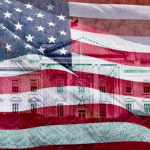Keynesian Economics vs. Monetarism: An Overview
Monetarist economics refers to Milton Friedman‘s direct criticism of the Keynesian economics theory created by John Maynard Keynes. Also referred to as monetarism, the difference between these theories is that monetarist economics involves the control of money in the economy. Keynesian economics involves government expenditures.
Monetarists believe in controlling the supply of money that flows into the economy while allowing the rest of the market to fix itself. Keynesian economists believe that a troubled economy continues in a downward spiral unless an intervention drives consumers to buy more goods and services.
Both of these macroeconomic theories directly impact the way lawmakers create fiscal and monetary policies. Monetarists would be most concerned with adding gasoline to their tanks. Keynesians would be most concerned with keeping their motors running.
Key Takeaways
- Monetarism focuses on controlling the money supply to control the economy.
- Keynesianism focuses on government spending to control the economy.
- Monetarists believe in fighting inflation by adjusting the amount of money in circulation.
- Keynesians acknowledge some value in monetarism’s effect on GDP but feel that monetary adjustments take too long to be felt.
- Both economic theories are used by lawmakers to create fiscal and monetary policies.
Keynesian Economics
Keynesian economics is synonymous with the terminology of demand-side economics. Keynesian economists believe that the economy is best controlled by manipulating the demand for goods and services. However, these economists don’t completely disregard the role that money supply has in the economy and its effect on the gross domestic product (GDP).
Keynesian economists believe in consumption, government expenditures, and net exports to change the state of the economy. Fans of this theory may also appreciate the New Keynesian economic theory that expands upon this classical approach. The New Keynesian theory arrived in the 1980s and it focuses on government intervention and the behavior of prices. Both theories are a reaction to depression economics.
Important
Keynesian economists do believe that it takes a great amount of time for the economic market to adjust to any monetary influence.
Monetarism
Monetarists are certain that the money supply is what controls the economy. They believe that controlling the supply of money directly influences inflation and that they can influence interest rates in the future by fighting inflation with the supply of money. Imagine adding more money to the economy and the effects this would have on business expectations and the production of goods. Now imagine taking money away from the economy. What happens to supply and demand?
Monetarist economics founder Milton Friedman believed that monetary policy was so incredibly crucial to a healthy economy that he publicly blamed the Federal Reserve for causing the Great Depression. He implied that it’s up to the Federal Reserve to regulate the economy.
Key Differences
| Keynesian | Monetarist | |
| Control of Economy | Government should intervene to manipulate demand for goods and services | Money in circulation should be regulated by the Federal Reserve |
| Inflation | Adjust government spending to adjust demand and control inflation | Control the money supply by increasing or decreasing it to control inflation |
| Unemployment | Emphasizes reducing unemployment more than reducing inflation; when people increase saving and reduce spending, the government may have to spend | Emphasizes reducing inflation more than keeping unemployment low; wages are likely to adjust naturally to prevent real wage unemployment |
| Views of Each Other | It takes too long for the economy to adjust to changes in monetary policies | Government spending causes rather than controls inflation and may crowd out spending by the private sector which is preferred over public spending |
Keynesian and Monetarist Examples in Politics
Presidents and lawmakers have applied multiple economic theories throughout history. President Herbert Hoover’s approach to balancing the budget failed during the Great Depression. It entailed increasing taxes and spending cuts.
President Roosevelt focused his administration’s efforts on increasing demand and lowering unemployment. His New Deal and other policies increased the supply of money in the economy.
The 2007-08 financial crisis led President Obama and lawmakers to address economic problems by bailing out banks and fixing underwater mortgages for government-owned housing. It appears that elements of Keynesian and Monetarist theories were used to reduce the national debt in these cases.
How Are Keynesians and Monetarists Similar?
Both theories affect the way U.S. government leaders develop and use fiscal and monetary policies. Keynesians do accept that the money supply has some role in the economy and on GDP but the sticking point for them is the time it can take for the economy to adjust to changes made to it.
What Do Monetarists Believe to Be the Main Reason for Inflation?
Monetarists believe that government spending causes inflation. They feel that the level of the money supply has a direct impact on inflation and must be used to control it.
What Is the Main Point of Keynesian Economics?
The main point of Keynesian Economics is that the economy can be controlled best by a government that intervenes when necessary to manipulate demand and consumption. Governments should balance out the cyclical movement of the economy by spending more in downturns and less in prosperous times, thereby preventing inflation.
The Bottom Line
Keynesian economics and monetarism are effectively opposite theories. John Maynard Keynes created Keynesian economics and promoted government spending in a bid to repair an ailing economy. Monetarists take the position that inflation can only be curbed if a government takes steps to adjust and control the amount of money in a country’s circulation. Both theories came into play in the U.S. with the 2007-2008 financial crisis.
Read the original article on Investopedia.


